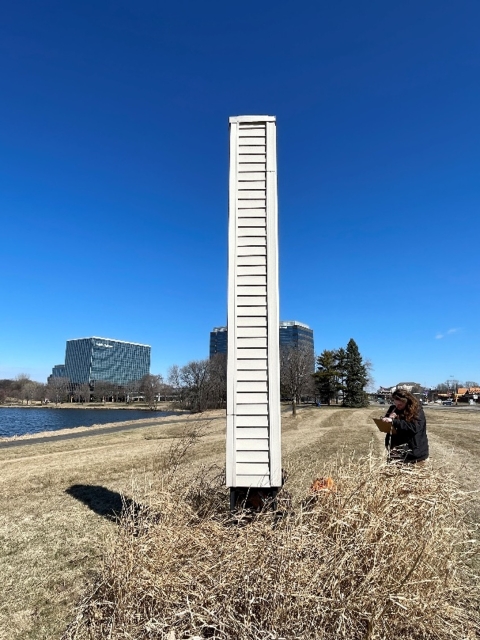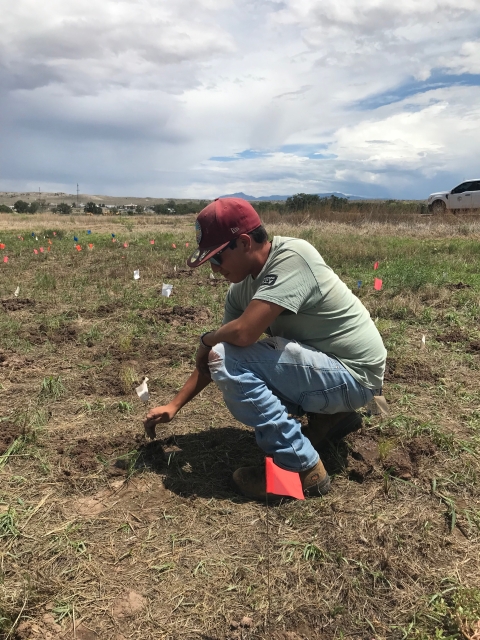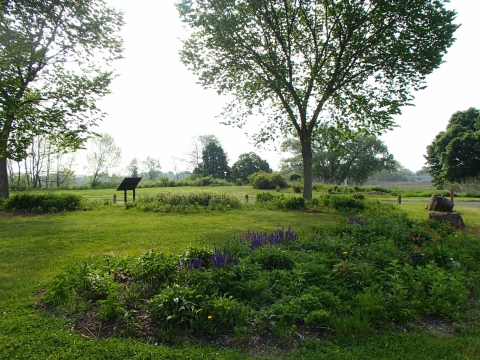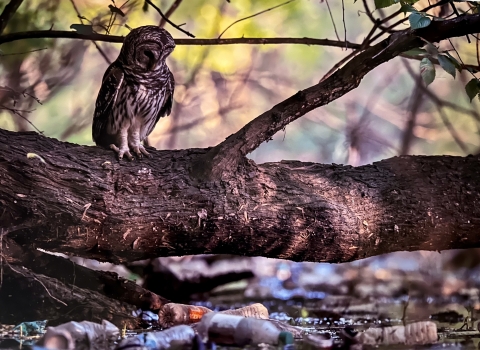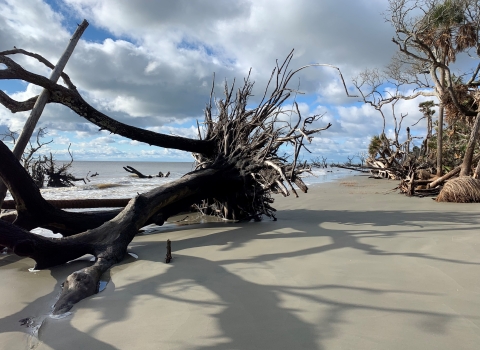This year the Service’s Urban Bird Treaty Program is funding five community-based conservation projects through its participation in the National Fish and Wildlife Foundation’s Five Star and Urban Waters Restoration Grant Program.
Every year, the NFWF Five Star program seeks to develop community stewardship of local natural resources in cities across the country to preserve these resources for future generations and enhance habitat for local wildlife by providing measurable and meaningful conservation and educational outcomes.
Partners in these NFWF-Urban Bird Treaty Program projects are creating opportunities for people in diverse and underserved communities to engage in a wide range of activities-–to help make their urban areas healthier places for birds and people.
For the 2024 grant funding cycle, the Service’s Migratory Bird Program contributed funds supporting projects in Michigan, Pennsylvania, New York, New Mexico, Arizona and Connecticut. Below are summaries of these five projects:
City of Battle Creek: Restoring Battle Creek’s Natural Areas for a Healthier Kalamazoo River
This project will restore 12 acres of degraded natural areas along the Kalamazoo River in Battle Creek, Michigan, by planting a diverse, young forest with a focus on benefitting priority bird species. The project will recover the original main channel of the Kalamazoo River that was relocated in the 1960s and restore the slopes and forest edges that have been disturbed by people and left vulnerable to invasive species invasive species
An invasive species is any plant or animal that has spread or been introduced into a new area where they are, or could, cause harm to the environment, economy, or human, animal, or plant health. Their unwelcome presence can destroy ecosystems and cost millions of dollars.
Learn more about invasive species . The project will engage 150 community volunteers, an undergraduate student, and 500 K-12 youth in tree planting and bird monitoring, and establish a long-term bird population monitoring site. Partners will provide educational events and opportunities for 20 K-12 teachers to set up STEM, volunteer, service learning and community science programs. This project is building a climate resilient urban forest, a healthier Kalamazoo River, and a community more connected to its local riverine and forest habitats and birdlife. In addition, A Manager’s Guide to Restoring Degraded Urban Areas for Priority Bird Habitat will be published by FMB & Forester. Partners include Natural Capital Forestry, LLC, Kalamazoo River Watershed Council, American Bird Conservancy, Kellogg Biological Station Bird Sanctuary, MI Tree Farm Committee, Leila Arboretum Society, Battle Creek Public Schools Michigan Youth Challenge Academy, Sustainable BC Committee, BC Employees, Kellanova Go, Green Team, City of Springfield.
Audubon Society of Western PA: Advancing Chimney Swift Conservation in Pittsburgh
This project will advance chimney swift conservation through habitat creation and restoration, research, monitoring, and the development of a framework for conserving chimney swifts in western Pennsylvania. The project will include data collection and analysis of 150 swift towers to identify characteristics of towers associated with nesting activity, restore 2.5 acres of habitat by installing bird-friendly demonstration gardens, and construct 2 new swift nesting towers. In addition, 490 community members will be engaged in educational programs, including swift nights out, and 50 volunteers and one paid intern will support bird monitoring, habitat restoration, and co-leading bird trips. The conservation framework and educational materials, including a video on tower construction will help to inform chimney swift conservation across the eastern U.S. and southeastern Canada. Partners include St. Vincent College, Three Rivers Birding Club, Allegheny County Parks, Versailles Borough, Tri-COG Land Bank, Wild Excellence Films, and the Jordan Foundation.
NYC Bird Alliance: Engaging diverse communities in bird conservation through habitat restoration, collision monitoring, and birding in New York City
This New York City project will engage local community members and youth interns in restoring 3.5 acres of wetland and meadow habitats and monitoring for biodiversity in Van Cortlandt Park to benefit migrating and nesting birds. These activities support city and state plans for stormwater management, natural resource enhancement, and public engagement in the Harlem River watershed. The project will support 360 community science volunteers over three migratory seasons to undertake bird collision monitoring that will generate the data needed to guide bird-friendly retrofits, Lights Out efforts, and reduce bird collisions with glass, which kill up to 230,000 birds each year in New York City. An afterschool birding club with 25 public elementary school students, 21 free bird outings reaching 200 people, and two bilingual bird outings will foster a connection with nature and an interest in birding and wildlife conservation among diverse communities in the Bronx and throughout New York City. Partners include Van Cortlandt Park Alliance, Crotona Park, Latino Outdoors, Van Cortlandt Park Nature Group, Ampark Neighborhood School - PS 344, and American Bird Conservancy.
National Audubon Society, Inc.: Conserving Urban Birds in the Southwest
This project creates meaningful engagement opportunities for community members in Albuquerque, New Mexico, and Phoenix, Arizona, along two major rivers, the Rio Grande and the Salt. Partners will create opportunities for diverse urban audiences to participate in educational programs and habitat restoration projects, attend two bird festivals, and participate in one "new birding leader" workshop in both states. All events are designed in partnership with local organizations with the intention to educate new, diverse audiences about urban birds and inspire meaningful actions that benefit birds, other wildlife, and people in urban areas. To strengthen existing partnerships and foster new ones, activities will be centered at the Valle de Oro National Wildlife Refuge visitor center in Albuquerque and at the Rio Salado Audubon Center in Phoenix. Partners include Valle de Oro National Wildlife Refuge, Bird Alliance of Central New Mexico, Friends of the Valle de Oro Friends group, Ancestral Lands Youth Corps, Rio Reimagined, USFWS Arizona Ecological Office, Phoenix area Audubon Chapters, Arizona Bird Conservation Initiative.
New Haven Ecology Project: Rippling Outward: Growing the Education & Restoration Impact of the New Haven Harbor Urban Wildlife Refuge Partnership in Connecticut
This project will restore and bring best management practices to at least 26 acres of schoolyard habitats, urban greenspaces, city parks, riparian riparian
Definition of riparian habitat or riparian areas.
Learn more about riparian zones, and urban neighborhoods across the City of New Haven, Connecticut. The project begins with 29 urban oasis sites at schoolyards and greenspaces, and ripples outward by expanding current areas of habitat restoration, removing invasive species, improving habitat along riparian corridors and city parks, and increasing the tree canopy in neighborhoods. Partners will also create 18 paid internships, engage more than 865 students in outdoor education, provide training and resources to 63 local teachers, and engage more than 900 adults and young people as stewards. Partners include the Stewart B. McKinney Wildlife Refuge, New Haven Urban Resources Initiative, New Haven Public Schools, and Community Placemaking Engagement Network.
In addition to the 2024 Urban Bird Treaty Program's funding, other National Fish and Wildlife Foundation Five Star partners contributed funding to support these projects, including funds from Urban Wildlife Refuge Partnerships, the Environmental Protection Agency, and Bank of America.



